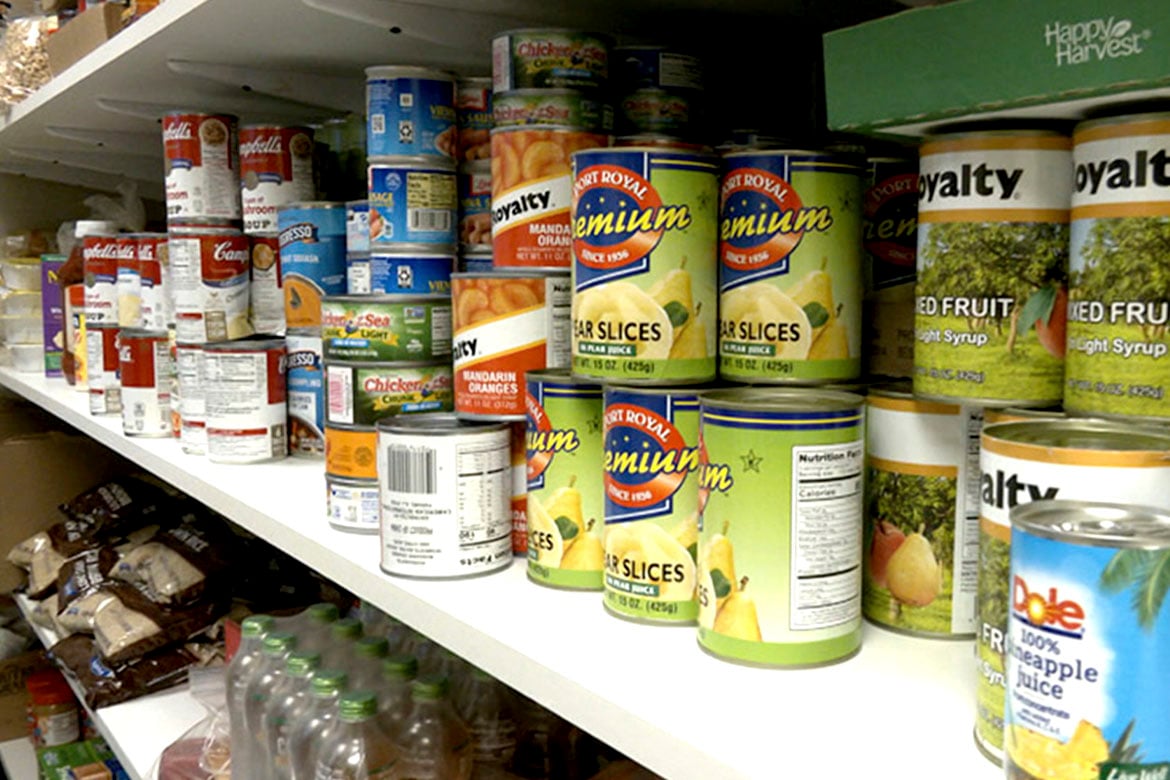At Sanford Health’s Southwest Children’s Clinic in Fargo, North Dakota, in a secluded nook, there is something unexpected: An assortment of free canned foods, dried goods, hygiene items—such as feminine napkins or deodorant—and other essentials. It’s not something patients are often initially aware of but provides a great resource to address food insecurities.
The key to uncovering this hidden gem for parents is answering three simple questions. Should their responses indicate a need for help to address food insecurity, they are provided with 20 to 30 pounds of provisions to carry home. This is about three to five meals per family.
“During the height of the COVID-19 pandemic, we recognized that there was just a great need for the families who we are serving in our area, and particularly the children who we are serving,” said Tracie Newman, MD, MPH, a pediatrician at Sanford Southwest Children’s Clinic in Fargo, North Dakota. Sanford Health is a member of the AMA Health System Program, which provides enterprise solutions to equip leadership, physicians and care teams with resources to help drive the future of medicine.
“When patients come into the clinic, they’re screened at our front desk, which is three simple questions,” Dr. Newman said.”
Parents are asked whether, within the past 12 months, they:
- Worried about running out of food before getting money to buy more.
- Ran out of food and did not have enough money to buy more.
- Used a food bank.
If they respond “yes” to any of the questions, they are offered free access to the well-stocked pantry. Dr. Newman added, “at that same visit we connect each family with an on-site social worker who comes in and offers resources for more long-term solutions for their food insecurity.
The U.S. health care system has long taken a rescue-based and downstream approach to dealing with the individual-level medical needs of patients. But it is important for health systems to understand and work upstream to confront and dismantle the root causes of inequities, and not just apply rescue-based downstream approaches to optimizing health and confronting bad health outcomes and harm.
In 2023, more than 6,100 patients were screened for food insecurity at the Sanford Southwest Children’s Clinic, which uncovered 1,201 parents whose responses indicated food insecurity—about one in five. This is up from 14% of patients in 2022 and 12.5% in 2021 who indicated food insecurity. On top of that, more than 700 patient families have accepted referrals for larger community resources such as working with a social worker.
Here is how Sanford Health’s Southwest Children’s Clinic makes the wellness pantry work.
Partner with the community
The pantry offers canned foods and dried goods to increase shelf life. And sometimes there are hygiene products as well as pediatric-specific items such as formula, diapers and wipes.
While donations are accepted and Sanford Health supplies some of the items, “we primarily partner with the Great Plains Food Bank in our community,” Dr. Newman said. “They supply the basic groceries and personal items. But we also receive generous donations.
“For example, we have received stuffed animals, dolls and toys which are especially appreciated if there is an upcoming birthday or holiday,” she added, noting ”some families will hide the item from their child and use it as a gift that they otherwise would not have been able to purchase.”
Find ways to expand offerings
Since the wellness pantry has been such a success, Sanford Health is “continuing to expand it because we’ve seen that need grow in our community,” Dr. Newman said, noting that “in October of 2023, our Moorhead Clinic—Moorhead, Minnesota, is right across the river from us—opened what’s called a food box program.
“So, our pediatric and family medicine departments are now expanding this program throughout the entire Moorhead Clinic area,” she added. “And it serves patients in women’s health, internal medicine and behavioral health.”
Then there is the food box program. With that effort, if patients respond to similar questions to indicate that they are experiencing food insecurity, they get one box of food that will provide three to four meals for up to four people.
Make it streamlined
There has been a lot of stigma around food insecurity. For example, as a member of the school board in the community, Dr. Newman has found that “when we try to offer free meals or free health care in schools, sometimes families won’t accept it. And it’s almost like a shame element.”
When parents check in at the clinic with their children, “they’re handed this screening of three questions” along with any other intake paperwork, meaning that answering the questions “becomes normalized,” she explained. “Families don’t have to report that to me as a direct question as their doctor. We streamlined it, and it took out any shame element or any needing element to it.”
“Addressing the social determinants of health may not be something people think of or they think it is out of their lane as a physician, but it’s important. It is part of our job, and it can be easily done,” Dr. Newman said. “It doesn’t take up any more time in your visit with your patients and you really could be affecting a child’s life.”





